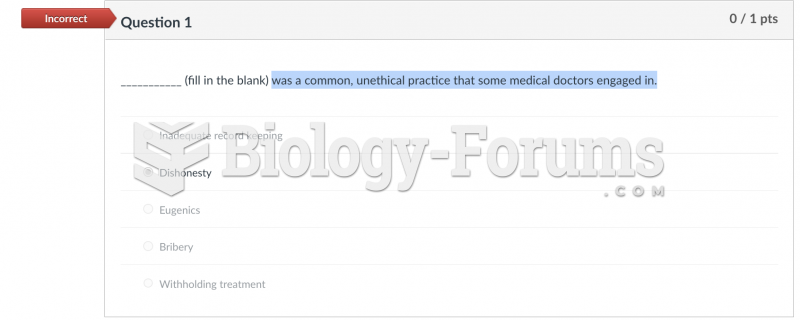Answer to Question 1
Correct Answer: 3
Rationale 1: A client on long-term corticosteroid therapy can provide a blood specimen without speaking to the health care provider.
Rationale 2: A client on long-term corticosteroid therapy can take an eye exam without speaking to the health care provider.
Rationale 3: A client on long-term corticosteroid therapy might be immunosuppressed and should speak to the health care provider prior to receiving a vaccination.
Rationale 4: A client on long-term corticosteroid therapy can provide a urine specimen without speaking to the health care provider.
Global Rationale: A client on long-term corticosteroid therapy might be immunosuppressed and should speak to the health care provider prior to receiving a vaccination. A client on long-term corticosteroid therapy can provide a blood or urine specimen or have an eye exam without speaking to the health care provider.
Answer to Question 2
Correct Answer: 2
Rationale 1: Raising the four side rails will not help with the itching skin.
Rationale 2: Applying hand mitts will protect the skin from breakdown secondary to scratching of the skin. The client is at risk for infection from the steroid medication, so the nurse should make every attempt to keep the client's skin clean, dry, and intact.
Rationale 3: Four-point leather restraints will not help with the itching skin.
Rationale 4: The client might be at risk for falls; however, this is not the priority intervention at this time.
Global Rationale: Applying hand mitts will protect the skin from breakdown secondary to scratching of the skin. The client is at risk for infection from the steroid medication, so the nurse should make every attempt to keep the client's skin clean, dry, and intact. Putting side rails up, using leather restraints, and application of risk for falls bracelet will not prevent infection.







